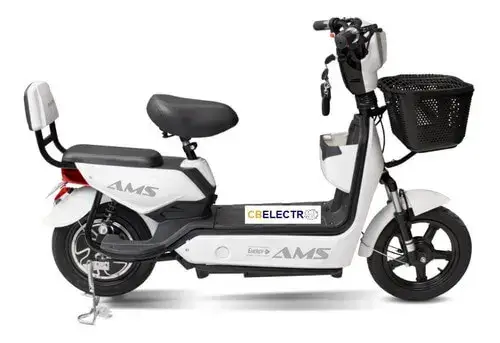Race driver Robert Wickens was told he’d never walk again, but he was determined to dance at his wedding
Robert Wickens has watched the crash countless times.
The Guelph, Ont., driver has watched his car slam into the Pocono Speedway wall, travelling at more than 200 mph, before careening across the track and splintering into pieces.
The jarring crash, its violence unusual even for a sport used to collisions, would change his life forever.
They call the track at Pocono in Pennsylvania The Tricky Triangle. Unlike Indianapolis or Michigan speedways, Pocono is actually not an oval, presenting drivers with three very different and difficult corners to navigate.
Ahead of the ABC Supply 500 race that August in 2018, Wickens wasn’t comfortable with the track during practice, but managed to qualify sixth and recalls feeling good about his ability to navigate the course.

«I was really confident going into that race, I was very confident; I knew exactly what I wanted to do at the start,» Wickens says.
Seven laps into the race, Wickens went to pass Ryan Hunter-Reay. Their wheels touched, sending Wickens’s car helicoptering into the fencing.
Nearly a year and half after the crash, Wickens says he would change nothing about his actions leading up to impact.
«I’ve really thought about that accident; time and time again looked at the footage,» Wickens told CBC Sports in Indianapolis, Indiana, where he is undergoing extensive therapy. «And I always think like, why couldn’t I have just maybe not tried to pass him? But I got to where I am in my career because of the type of driver that I was.
«You know, I was never just complacent and just happy where I was. I always wanted more and more and more.»
WATCH | Robert Wickens’ long road to recovery:
What was left of Wickens’s car slid across the track, coming to a stop against the infield wall, the wreckage of his vehicle and others caught up in the collision strewn all around.
Wickens somehow maintained consciousness, encased in the driver cockpit that likely saved his life. Emergency crews worked to extract him and he was airlifted to Lehigh Valley Hospital in nearby Allentown.
For 10 days, Wickens lay in a medically induced coma before finally opening his eyes.
«Every time I woke up I would always try to move and I couldn’t. And then somebody would have to tell me I was in a bad accident.»

Wickens’s organs and bones were bruised and broken. He had suffered a thoracic spinal fracture, spinal cord injury, neck fracture, tibia and fibula fractures to both legs, fractures in both hands, a fractured right forearm, fractured elbow, a concussion, four fractured ribs and a pulmonary contusion.
Doctors told him his bones would eventually heal. They couldn’t offer the same assurances about his bruised spinal cord
«It’s not a broken leg where you’re eight weeks in a cast and then you’re right back at it,» Wickens says. «No one knows what the outcome is. People told us at the beginning that you’ll never walk again. They don’t know.
«I did find out that based off of the imagery from the MRI, they didn’t think there was much of a chance compared to other spinal cord injuries that they’ve seen.»
Initially, Wickens didn’t grasp the severity of his injuries, of what his body had endured. In his mind, he still had visions of returning to race during this past season.
«I thought I’d get back on my feet. I remember talking to some other drivers and we were joking about how long it might take to recover,» Wickens recalls. «And I remember saying I could do it in half of that.»
When the crash happened, Wickens was set to be married in four months. His fiancée, Karli Woods, was usually at every race, often on a headset, but watched the Pocono race at home on television.
She’d seen enough crashes that she was not initially unnerved by the sight of Wickens’s car spinning out.
I didn’t know you had to learn how to live your life again.– Karli Woods
«Then I started getting phone calls from people that I’ve never heard of,» she says. «And that’s when I knew it was a little bit more serious.»
When she finally arrived at the Pennsylvania hospital, Wickens was comatose and bandaged. When he emerged from the coma, he had no idea who she was.
It would be a long road ahead.
After a lengthy hospital stay, the couple eventually ended up at a Denver hospital, a place they call «spinal cord university,» where they started learning how to live their new lives, including how to cook, eat, go to the bathroom and get into a car. Karli says they didn’t understand how drastically different their lives would be until they arrived.
«I just wish we knew at the beginning what that looked like. Because no one told us that you had to go to rehab and this is what rehab looked like,» Karli says. «We thought you got out of the hospital and you went home and then you go to the gym and start learning how to walk again. I didn’t know you had to learn how to live your life again.»

Over the course of the next seven months, Wickens put in gruelling days as he learned the limitations of his new body.
«Anything I get my hands on, I would sign up for it just to try to get as much rehab as I could. It was exciting. It was hard work. It was exhausting.» Wickens remembers.
Wickens’s hard work and diligence paid off at the beginning as parts of his body came back to life. He wrote down muscles he started to feel again, the list growing longer each week. He says he was in tears the first time his leg twitched.
But as time has gone on, those victories are less frequent.
«I want to be able to be out of my wheelchair and walking. And I don’t care if I have arm crutches or a single crutch. But now I’m happy that I’m getting so much back. I’m happy that I’m still progressing.»
Since the crash, there have been a number of milestones as Wickens tests his body’s limitations. The biggest came this past October when the couple were married.
A little more than year after being told he would likely never walk again, Wickens rose to the occasion. Others suffering from spinal cord injuries had told Wickens how important it was to have goals as he worked through his recovery. He had been focused on preparing for that first dance.
Ticked a lot of boxes last weekend<br>• Didn’t fall saying my vows ✅<br>• Gave <a href=»https://twitter.com/itsKarliWoods?ref_src=twsrc%5Etfw»>@itskarliwoods</a> a twirl or two ✅<br>• Laughed lots with the best people ✅<br>• Cried a little bit of Happy Tears ✅<br>• Got Married to the woman of my dreams and my best friend ✅ <br>? bryanstarrcinematography <a href=»https://t.co/1KBcBlaVG2″>pic.twitter.com/1KBcBlaVG2</a>
—@robertwickens
«He really wanted to dance at the wedding,» Karli says. «He knows how much I like dancing so he wanted to give me that first dance — twirls and everything — which he did. We keep telling everybody that his dancing has probably gotten better, that he’s in a wheelchair now. He’s got more moves now.»
For Wickens, writing the great Canadian comeback story has many components, but one central goal. It’s all about readying and recalibrating his body and mind to drive a race car again.
It’s all he’s ever known. Since Wickens was a little boy growing up in Guelph he has always insisted on going fast. As a young boy, he raced go-karts, winning wherever he went, and quickly emerged as one of the best young drivers around.
When he was a teenager, his family sacrificed everything, selling their home so he could race in Europe. For the next six years, Wickens raced for the prestigious Mercedes team, competing against and beating some of the best drivers in the world.

His return to North America and the IndyCar circuit in 2017 was triumphant. In the 13 races during his rookie season, Wickens finished in the top five seven times, highlighted by an exhilarating third-place finish in Toronto.
«I was racing the best I’ve ever raced prior to the accident,» Wickens says.
Wickens wants to pick up where he left off. He’s very aware of the obstacles and uncertainty that come with the kind of comeback he imagines.
«When it’s all said and done, when my body tells me that’s all I got. I want to make sure that I’m happy with the job that I did,» Wickens says. «As an athlete, as a perfectionist, I’m going to be really disappointed in myself if I look in the mirror and I think I could have done things differently.»
On a frosty November morning, we meet Wickens as he rolls into a suburban rehab facility that sits in the middle of strip mall near his Indianapolis home. It’s where you can find him most days around this time.
He arrives tired, stiff and with a migraine. He glances around the near empty gym before wheeling across the room and lifting himself onto a padded massage table. It’s the beginning of a daily game of trial and error as he experiments with how to retrain his body.
As his therapist works on his quad, Wickens grimaces.

«If you saw my foot was always kicking, that’s involuntary,» Wickens says, lying flat on the table. «He’s hitting the pressure point that I don’t know hurts because the signals aren’t getting through entirely.»
Wickens doesn’t feel muscle pain or burn like he once did, meaning he’s always calculating how far to push each day.
«It’s a constant understanding of what’s going on. I think when I finally feel that fatigue, it’s not through a muscle burning sensation.» Instead, it’s through the failure of the muscle, he said.
The hardest work Wickens does takes place on the centre’s anti-gravity treadmill. He slowly slides on a pair of neoprene shorts and his trainer helps him onto the treadmill.
For a moment he is unsteady before grasping the bars and hoisting himself onto the rubber track.
«My trunk stability is a knife’s edge,» Wickens says. «It’s really easy to fall forward or fall back.»
Before he begins, a scale underneath calibrates his weight and the system blows air upward into a bubble that covers the bottom half of Wickens’s body, and unweights him. He usually walks on the treadmill at about 80 per cent of his body weight, essentially taking off about 30 pounds.
Happy to be back at <a href=»https://twitter.com/DefiningSports?ref_src=twsrc%5Etfw»>@definingsports</a> this morning after spending last week in the hospital. It’s amazing what 4 days in bed does to your muscle tightness and atrophy. The good news is the human body is a crazy thing and I’ll be back to my full potential and more in no time!! <a href=»https://t.co/5jGrUEXaz7″>pic.twitter.com/5jGrUEXaz7</a>
—@robertwickens
«At the beginning of my walking, I was always walking a tightrope. My legs just wanted to go over top of each other. It’s gotten a lot better lately so I can keep them in line with each other.»
Wickens says his right leg is much stronger than his left, something common in spinal cord injuries. If they were equally strong, he says, it would allow him to have a much more consistent gait.
In the 20 minutes he spends on the treadmill, he travels 0.3 of a kilometre before fatigue sets in and he wraps up his morning workout.
After lunch and a doctor’s appointment, it’s back to work, this time at a gym catering to the area’s elite racers, offering a unique combination of physical and mental training.
After another gruelling workout, Wickens heads into a dark room. Sitting in front of a large white screen, he matches a dizzying array of shapes before they quickly disappear. It’s like a video game for professional race car drivers and all about keeping his mind razor sharp and ready.
«You want to replicate the heart rate you’d have sitting in the car,» Wickens explains. «When you’re struggling for oxygen, your brain isn’t thinking sometimes.»
Almost as difficult as this injury is physically, mentally I think it’s almost worse.– Robert Wickens
His mind still operates like a world-class driver and is still able to make quick decisions. Wickens isn’t happy with his score, but it still lands him on a top 10 list that is full of familiar names from the IndyCar circuit.
Karli offers some words of encouragement as he wraps up the video session. She is usually right by his side as he works through the monotony of his rigorous rehab regime.
It’s not the first few months of marriage most couples envision, but Karli has never wavered in her dedication to helping her husband recover.
«I think with our relationship, we had already lived together for four years before we got married and before the accident. So we were always together,» Karli says. «I think we already knew each other so well. And the accident just brought us closer together. There’s literally nothing hidden anymore.»
Wickens marvels at the sacrifices his wife has made, putting everything on hold and transforming into a nearly full-time caregiver.
«She’s just made it so clear that it was always going to be together,» Wickens says. «And that meant so much to me. That she would never think about wanting to be anywhere else. It’s just been amazing.»
Wickens pushes a sled burdened with weights across the empty gym floor. As he reaches the far end, Karli is waiting, snapping a series of action photos.
The Wickens have been very public about Rob’s recovery, posting pictures and video on social media, documenting every victory and setback. They say after Rob’s injury, it was a struggle to find information on living with a spinal cord injury.
This is MY May working on my ovals. <br>It’s good to see my house after being away for almost 9 months. <br>I’m ready to help <a href=»https://twitter.com/SPMIndyCar?ref_src=twsrc%5Etfw»>@spmindycar</a> at the <a href=»https://twitter.com/hashtag/indycarGP?src=hash&ref_src=twsrc%5Etfw»>#indycarGP</a> this weekend! <a href=»https://twitter.com/hashtag/indy500?src=hash&ref_src=twsrc%5Etfw»>#indy500</a> <a href=»https://twitter.com/hashtag/thisismay?src=hash&ref_src=twsrc%5Etfw»>#thisismay</a> <a href=»https://twitter.com/hashtag/spinalcordinjury?src=hash&ref_src=twsrc%5Etfw»>#spinalcordinjury</a> <a href=»https://twitter.com/hashtag/IndyCar?src=hash&ref_src=twsrc%5Etfw»>#IndyCar</a> <a href=»https://twitter.com/hashtag/rw6?src=hash&ref_src=twsrc%5Etfw»>#rw6</a> <a href=»https://t.co/5Jz7G3BdN1″>pic.twitter.com/5Jz7G3BdN1</a>
—@robertwickens
«We have this great opportunity where we can help raise awareness and kind of show what a recovery might look like. And that’s been, it’s been so supportive. It’s blowing me away.»
But there is no roadmap for what the couple is going through. Every day presents a new set of challenges.
They have leaned on the support from friends, family and fans. As the couple adjust to their new lives together and deal with Rob’s medical needs and recovery, there are many dark days.
«Almost as difficult as this injury is physically, mentally I think it’s almost worse,» Wickens says.
«There’s days where Karli and I will sit on the couch and I just tell her that I’m in a mood right now where I’m just really mad at the state that I’m in. And it’s just uncontrollable. And I don’t know how long that’s going to happen for.»

«I think that is so important for anybody going through a spinal cord injury that, not only the person injured should be going through therapy, but also the significant other,» Karli says. «It’s a huge change mentally. Our lives have changed and things with me have changed.»
Being back home in Indianapolis over the past few months has slowly given the couple a sense of routine.
The house is being retrofitted so Wickens can move around more easily.
He is back behind the wheel. Not the car he wants to be driving, but a custom minivan that he is able to zip in and out of.
Robert Wickens is trying to adjust to his new circumstances, getting used to taking small steps when he’s used to going fast.
«My dream is obviously to get back into a race car again. But there’s a lot that needs to happen,» he concedes. «There’s a lot of unknowns with this injury still. I’m still trying to just become stable in everyday life. I’m still trying to figure out how to live this life.»






